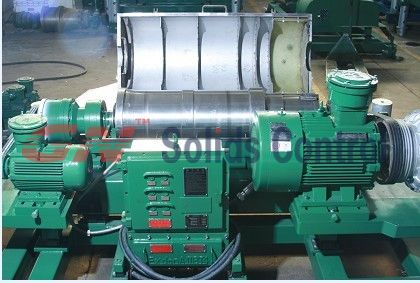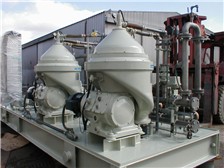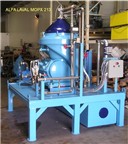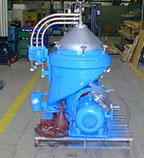Despite the oxymoronic name, 'dry water' is very real. This bone-dry water-silica compound could provide a way to transport dangerous liquids and gases safely - inside trillions of water-drop sized packages.
'Dry water' is comprised of 95% water, with a thin layer of silica coating each droplet, essentially turning it into a dry powder. When it's mixed with certain liquids or gasses, they combine with the water - which then traps them in a silica cage. Hence, they become non-reactive, and are easily transported without worrying about accidental detonation and the like.
'Dry water' Despite the oxymoronic name, 'dry water' is very real. This bone-dry water-silica compound could provide a way to transport dangerous liquids and gases safely - inside trillions of water-drop sized packages.
 'Dry water' is comprised of 95% water, with a thin layer of silica coating each droplet, essentially turning it into a dry powder. When it's mixed with certain liquids or gasses, they combine with the water - which then traps them in a silica cage. Hence, they become non-reactive, and are easily transported without worrying about accidental detonation and the like.
'Dry water' is comprised of 95% water, with a thin layer of silica coating each droplet, essentially turning it into a dry powder. When it's mixed with certain liquids or gasses, they combine with the water - which then traps them in a silica cage. Hence, they become non-reactive, and are easily transported without worrying about accidental detonation and the like.'Dry water' was first discovered in the late 60s, and was immediately snatched up by cosmetic companies, eager to make use of its unique properties. It resurfaced in 2006, and researchers at the University of Liverpool have been working on new applications for the hydrate.
This substance gleefully combines with both liquids and gasses - and this feature makes it very useful. The primary application would be carbon dioxide sequestering. The 'dry water' can absorb three times the mass of CO2 as its constituent ingredients could.
The research also indicates the substance could be used a number of other ways: for storing and transporting methane (from natural deposits, or as fuel); as a way of speeding up the reaction between hydrogen gas and maleic acid to produce succinic acid, which is used to make drugs, food ingredients, and consumer products; or, to aid in transporting emulsions.
What about getting the stored materials out again, once they've been sequestered? Dr. Ben Carter, a researcher on the product, says it's quite straightforward to separate:
A dry liquid (either pure water or a solution of something dissolved in water) can be separated back to liquid + silica by either of two methods. You can centrifuge it at high speed to force the two apart, or you can add an alcoholic solvent like methanol or ethanol. This reduces the water surface tension as the alcohol penetrates the water droplets, causing the dry liquid to fall apart.
If you've stored a gas in DW as a gas hydrate, all you have to do to release it is warm up the material to melt the hydrate (hydrates normally form at 0 degrees C under pressure, and can be stored at -20 degrees C without the need to be kept under further pressure).
The dry water itself is easy enough to manufacture. The hydrophobic silica and water are blended together at 19,000 rpm for 90 seconds, which coats the water droplets completely.
source:












